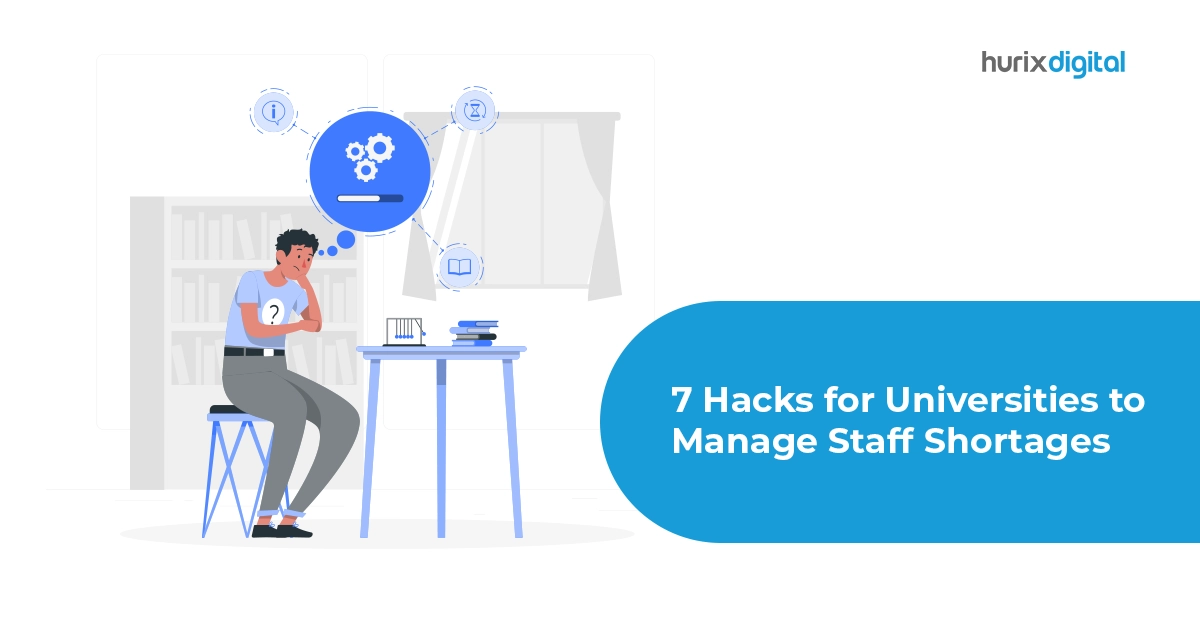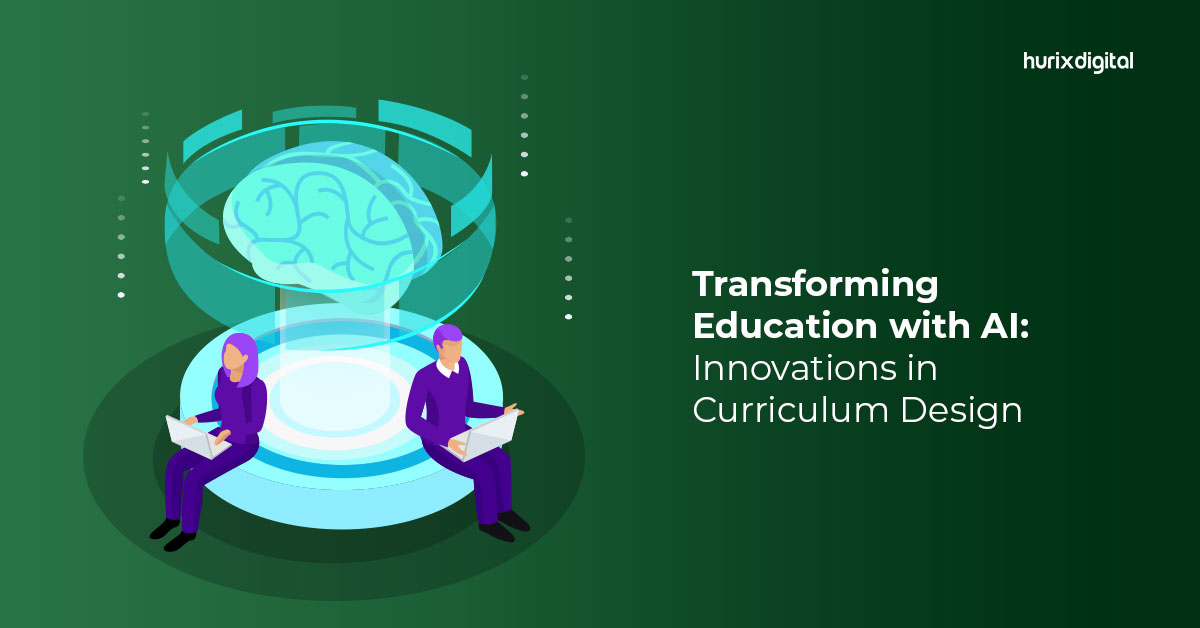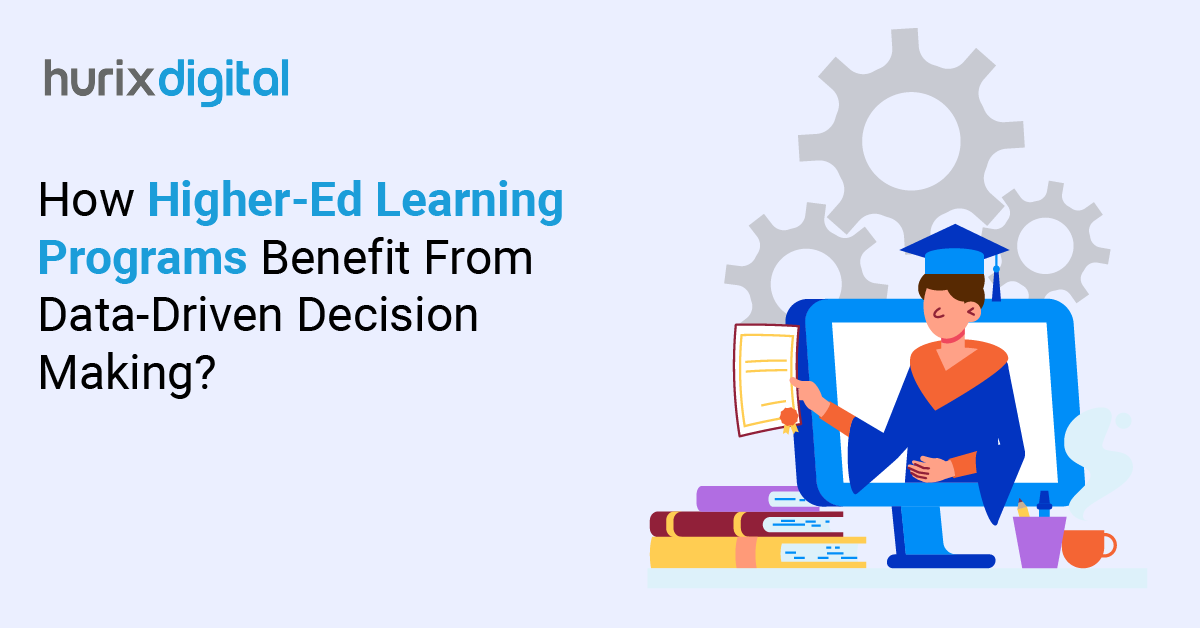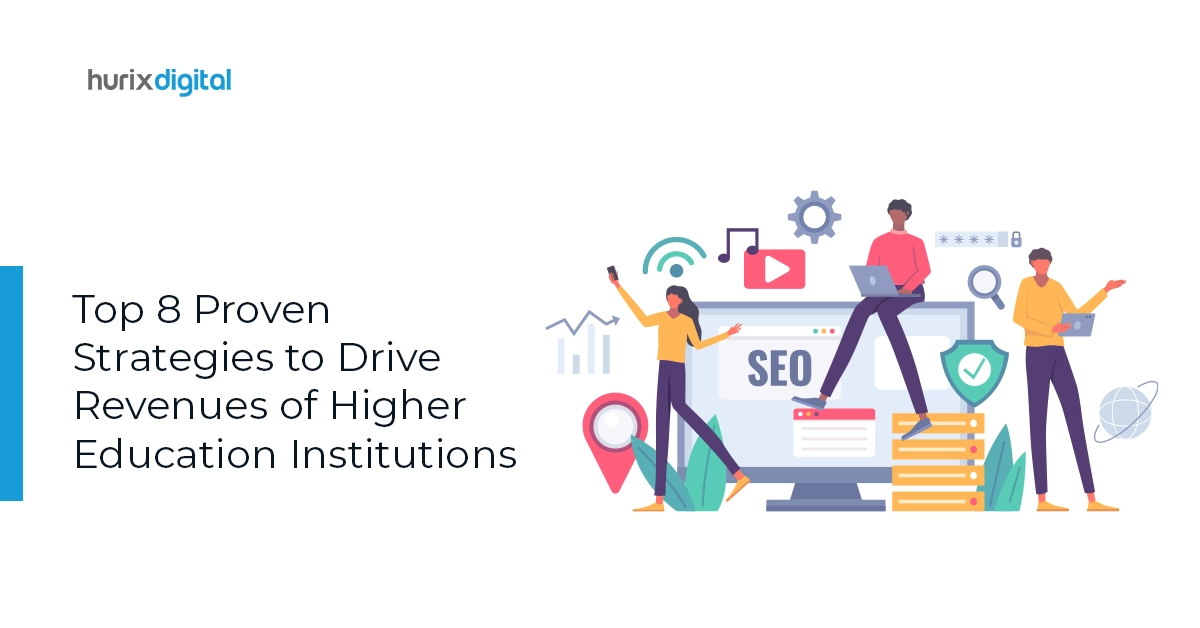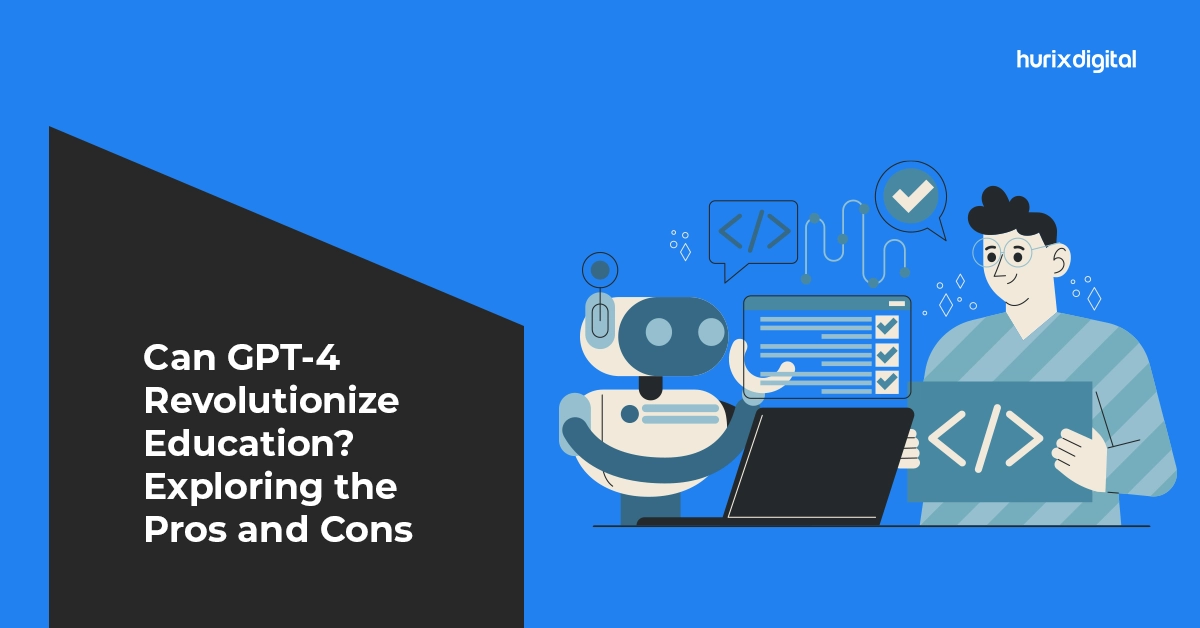
Can GPT-4 Revolutionize Education? Exploring the Pros and Cons
Summarize with:
With the rapid advancement of technology, artificial intelligence is transforming various facets of human life. The domain of education is no exception, and artificial intelligence tools like chat GPT-4 hold immense potential for revolutionizing how learners retain information. However, it is important to remember that many challenges also come with the revolutionizing potential of artificial intelligence in education.
If you want to know more about the pros and cons of GPT-4 in education, you are at the right place. In the comprehensively curated article, we have covered everything you need to know about artificial intelligence in education.
Table of Contents:
What is Chat GPT-4?
Chat GPT is OpenAI’s large multimodal language model that generates text from textual and visual input. Open AI is the American AI research company behind Dall-E, ChatGPT, and GPT -4’s predecessor, GPT-3.
GPT-4 stands for Generative Pre-Trained Transformer 4 and has marked a significant milestone in artificial intelligence. One of the major highlights of GPT-4 is that it can solve more complex problems with greater accuracy while leveraging deeper learning approaches and computational data.
Also Read: Revolutionizing Education: The Future of Online Learning and Curriculum Integration
Features of Chat GPT-4?
Chat GPT-4 is widely used to generate human-like text and understand complex concepts. These capabilities are crucial in educational contexts with tasks like comprehension, learning, assessments, curriculum development, and more.
Mentioned here are some more features of GPT-4 that can be leveraged to enhance educational and learning outcomes.
1. Personalized Learning Experiences
GPT-4 can give users a more personalized learning experience. With the right prompts and input, learners can leverage GPT-4 to customize instructional content in real-time by evaluating massive volumes of data about individual learning patterns, preferences, and strengths.
With a tailored approach that reinforces prior knowledge while concentrating on areas of development, students can learn at their own speed.
2. Improved Curriculum Development
GPT-4 is not just helping students but also educators and teachers by assisting them in refining their curriculum. It is important for teachers to properly analyze student learning outcomes and performances and keep emerging pedagogical trends in mind while designing new curricula.
GPT-4 can help educators with all of these aspects and further refine their approach. The intervention can result in a more comprehensive curriculum development approach that ensures all students’ learning needs are satisfactorily addressed.
3. Administrative Effectiveness
Beyond classroom and teaching hours, teachers spend a lot of time managing administrative duties. AI tools can also help teachers and educators manage their administrative duties effectively, allowing them to save more time for teaching and student engagement.
Additionally, leveraging GPT-4 can also lead to cost savings and improved overall productivity in educational settings.
4. Problem-Solving
Learners face many challenges, and they do not always have access to a teacher to help them solve complex problems. In such situations, GPT-4 can play a big role in assisting learners in solving problems, troubleshooting issues, answering inquiries, and also offering creative suggestions.
Additionally, the learning model of GPT-4 is not just limited to known problems; it is also good at adapting and generating solutions for new challenges. If a student needs creative ideas for a project, GPT-4 can provide relevant and thoughtful solutions, showcasing its versatile problem-solving abilities within the context of a chatbot.
5. Assessment and Feedback
Another classroom integration of GPT-4 that can help enhance learning outcomes is its additional assessment and feedback capabilities.
This automatic feedback mechanism eliminates the need for repetitive grading duties, freeing up teachers’ time to focus more on developing effective teaching strategies and interacting with students in more advanced learning activities.
6. Support for Special Needs Education
Another important highlight of GPT-4 is its ability to meet the learning needs of learners with disabilities. It can provide audio descriptions, modify content to fit specific learning methods, and offer other forms of learning materials for students with special educational needs or disabilities, such as dyslexia or visual impairments.
This ensures all students will have equal access to educational resources and support.
Challenges of Chat GPT-4
While there are many advantages of utilizing GPT-4 in the educational domain, there are numerous challenges and ethical considerations which must also be carefully addressed. Mentioned below are some of the challenges of GPT-4:
1. Privacy and Data Security
GPT-4 results are highly accurate because it has access to an extensive database. Additionally, it collects data while catering to users and learners through problem-solving and more.
To maintain trust within the users, it is important to safeguard this data against breaches and unauthorized use. Teachers must implement robust data protection measures and transparent policies regarding data usage and storage.
2. Dependency on Technology
High dependency on artificial intelligence and its various other extensions, like natural language processing (NLP) and machine learning, affects users’ problem-solving skills and critical thinking. Consequently, it is important to balance students’ reliance on artificial intelligence for their learning needs.
The role of AI is not to replace traditional learning but only to aid it in optimizing the learning and retention capabilities of students. Teachers can levy regular checks and mechanisms to ensure students are utilizing AI tools ethically and moderately.
3. Bias and Fairness
Certain student demographics may be disadvantaged by biases perpetuated unintentionally in training data by AI systems like GPT-4. To ensure justice and equity in AI-driven educational systems, it is necessary to thoroughly examine algorithms and take proactive steps to reduce prejudice during development and implementation.
Also Read: Technologies to Invest in Boosting Higher Education Learning
Conclusion
It is important to balance the advantages and ethical considerations before combining AI with educational technology. Educators and teachers must adopt a strategic approach to ensure students leverage AI ethically to enhance their learning outcomes and engagement levels. By addressing these challenges proactively and responsibly, stakeholders can harness AI’s transformative potential to create inclusive, effective, and future-ready educational environments.
If you need help while embarking on the journey of integrating AI into education, Hurix Digital can help you with this. With Hurix Digital, you can incorporate cutting-edge AI products and create a more nurturing, efficient, and impactful learning experience for your students. Some other K12 and higher education solutions we offer are courseware development, editorial services, assessment services, staffing solutions, and more.
Contact us today to collaborate and succeed together!
Summarize with:

Senior Vice President
A Business Development professional with >20 years of experience with strong capability to sell new solutions and develop new markets from scratch. New Market Entry Specialist with experience working in the largest emerging markets. Exceptional experience in conceptualizing, ideating and selling new learning technologies like VR AR, etc. across multiple industry verticals.
 Upcoming Masterclass | Build an Army of Brand Evangelists using Training & Development | November 6th, 8am PT | 9PM IST |
Upcoming Masterclass | Build an Army of Brand Evangelists using Training & Development | November 6th, 8am PT | 9PM IST |

